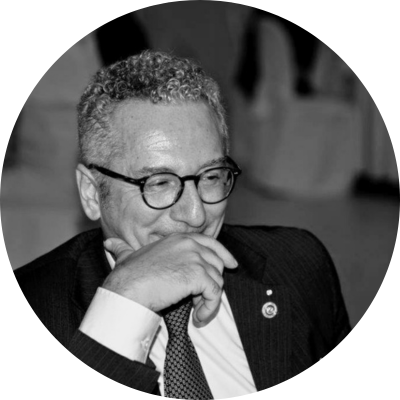
It can be sometimes forgotten that the purpose of evaluations is not only to identify whether specific interventions have worked (or not), but also, and more importantly, to use that insight to advocate for more impactful future interventions. Such forgetfulness is understandable, as it is usually much easier to use data to describe the past than to speculate about the future. Sometimes, however, evaluations achieve enough insights to go beyond speculation and offer concrete guidance. This is what happened thanks to several evaluations that AP completed, which looked at peacebuilding efforts in Iraq.
Over the last two years, AP has completed several learning assignments that have assessed the successes and limitations of peacebuilding efforts in Northern Iraq. This is the geographic area that had been most affected by the rise, spread and fall of the Islamic State in Iraq and Syria (ISIS).
The extremist group grew to control the city of Mosul and large swaths of land across Ninewa governorate in the North of the country. ISIS was responsible for untold gross human rights violations, which targeted, among others, the Yazidi minority and women in particular. The rise of the group forced millions to flee their homes in 2014.
This first wave of refugees and internally displaced people (IDPs) was then followed by a second wave, when the defeat of ISIS, in 2017, led millions to flee because of the fear that they would be subject to retaliation and revenge by those who suffered at the hands of the extremist group.
Social cohesion in these areas has been shattered: communities still live in resentment and fear of each other, and of government officials. Simultaneously, the rise of armed groups created to protect people, like Yezidis, while important to defeat ISIS, has also contributed to people’s perceptions of insecurity.
In the years since ISIS’ defeat, many peacebuilding projects have been launched with the specific purpose of reestablishing trust and mending the wounds of violence. Many of these, including the ones that AP evaluated, have had significant success. Different projects, for example, were key to mobilizing groups of women and young people, allowing them to have a stronger voice when talking about their needs and priorities. Projects brought together members from different communities—including Yazidis—and these dialogues have started to thaw mistrust. Right after the liberation from ISIS, travel from one village to the next had all but stopped as people feared that they would be targeted because of their ethnicity and perceived role under ISIS. Different efforts, led by NGOs, have made travel possible again.
A good example of the success of this work is what happened when a false rumor spread that Yazidi youth had attacked and burned down a Sunni Mosque in Sinjar, a district where ISIS’s violations were particularly brutal.
The rumor was false, but it was disseminated online through social media , raising tensions between Sunni and Yazidi communities.
At one point, these tensions appeared to be on the brink of erupting into violence.
Yet, the efforts of several NGOs helped to prevent conflict. Yazidi leaders were mobilized to visit the mosque and show that it was undamaged. Sunni leaders were also mobilized to talk to people in their communities.
There were, as a result, different news items and videos that proved that the rumor had been false all along.
Violence was averted.
Peacebuilding interventions have been effective and achieved a first degree of impact, as the evidence shows that trust has started to be built and relapses into social violence have been regularly avoided. This is important to recognize because data is seldom this consistent in showing the effectiveness and the impact of efforts as complex as those that are being implemented in Northern Iraq.
Furthermore, the successes validate the strategies of the NGOs responsible for these interventions, chiefly the focus on the participation of civilian actors, including community-based and women-led organizations, and the continuous engagement of different stakeholders such as tribal and religious authorities and government officials.
The data also points to what more needs to be done. All the projects reviewed by AP shared, in fact, common challenges, the most important of which is a resistance to engagement. Even where members from different communities meet, these efforts have not been enough to overcome a deep sense of resentment and diffidence. The victims of ISIS lament that they have not seen justice for the violence they suffered. Those who could not flee when the group arrived feel that they are now being unfairly treated. All of them live in fear of reliving the pain they went through. And this is not changing, regardless of the times they are brought together, regardless of the new skills and knowledge they now have, regardless of what projects have been doing so far.
What the data collected and reviewed says, loudly and consistently, is that peacebuilding efforts, as presently structured, have been as successful as they can be. They are likely to be able to produce similar positive results in the future, but they cannot be expected to achieve more than that. Something else needs to happen to continue supporting peacebuilding in Iraq, which ultimately lies in addressing inter-communal resentment and diffidence, and the trauma that contributes to both.
This is, then, the moment when evaluators should remember the purpose of evaluations and turn into advocates. The data shows clearly that the main need, for continuing to build sustainable peace, is overcoming deeply ingrained resentment. This requires a comprehensive response to the legacies of massive human rights violations, which are causing that resentment. And a concrete and tested way to address such legacies is through transitional justice.
Transitional justice offers several ways to consolidate peacebuilding efforts in a country moving away from war, for example through investigations of past crimes, psycho-social support to victims, and institutional reforms. So far, however, transitional justice in Iraq has been, in the words of one expert, “a record of squandered opportunities and compromised institutions”, largely because of political considerations. Yet, the data now says that it is no longer possible to ignore the need for justice and accountability.
All organizations working for peace in the country should heed this call.






























